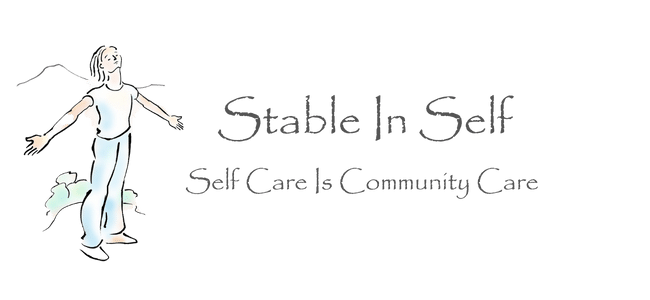Abhyaṅga: Self-Oil Massage
Our skin is the largest organ of the body. It is our first line of defense against whatever surrounds us. There are so many toxins around us that we cannot control in this modern life, but we can control what substances we choose to apply directly to our skin. Harsh chemical cleansers or body products with chemical compounds are damaging to the skin and deep tissues of the body. There is a saying that one should not apply anything to the skin that they would not put into their mouth. What goes on the skin is digested by the body, just not through the GI tract. Reading labels, and choosing food-grade cleansers and body products is a great way to care for the skin.
Care of the skin can also be as simple as wearing pants while hiking in an area with prickly plants or putting on a hat for protection from the sun. Āyurveda strongly suggests the practice of Abhyaṅga, or self-massage, as part of our daily routine. A regular practice of massaging oil into the skin not only puts a protective barrier on the skin, it calms the entire nervous system and helps circulate lymph. Another common practice that is beneficial for some people is massaging the skin with raw silk gloves or some other gentle exfoliating tool.
Self-massage with warm oil is a blissfully relaxing and revitalizing practice for mind, body, and soul. Abhyaṅga as a daily practice will protect and sooth the skin, as well as help balance the emotions and keep the mind clear and alert. It will increase energy during the day and promote sound sleep through the night. Daily self massage invokes self-love and self esteem, leaving you with a deep sense of peace.
Supplies:
Approximately 1/4 cup of oil. This can be sesame, sunflower, or coconut oil from the grocery store or herbal massage oil. Sesame is heating, sunflower is more neutral, and coconut is cooling. It is generally suggested not to use coconut oil in the cooler times of year or sesame oil during the heat of summer.
Mug or bowl of hot water to warm the oil.
Towel or mat.
Massage Instructions:
Place the bottle of oil in hot water.
Sit on your towel or mat in a warm room.
Massage the oil into your skin, giving each part of your body adequate attention. Use up and down strokes over the limbs and circular strokes around the joints. Give clock-wise strokes to the abdominal area (going up the right side and down the left). In general, strokes go towards the heart. You can start with the feet and work inward, go to the hands and work inward, and then focus on the trunk of the body.
When/if massaging your scalp, apply oil to the crown of the head and massage the scalp. If you are concerned about getting oil in your hair, simply skip the head until you get more acquainted with the practice.
Take a warm bath or shower after your massage. This allows the pores and channels of the body to open, encouraging the oil to penetrate deeper into the tissues. Don’t use soap to wash off the oil. Just wash the “essentials”; underarms, genitals, etc. If you have oil in your hair, apply shampoo before wetting your head to cut the oil more effectively.
After showering, there should be a thin protective, moisturizing layer of oil left on the skin. Each of us will absorb the oil differently based on our constitution and current needs. If you are left dripping with oil after your shower, this may not be your medicine.
Contraindications: During heavy days of menstruation, while intoxicated, excessive weakness, during fever or illness, with a full stomach. Pregnant people should consult their practitioner.
Ether
Ākāṣa
El Éter
Air
Vāyu
El Aire
Fire
Agni
El Fuego
Water
Āpas
El Agua
Earth
Pṛthvī
La Tierra





